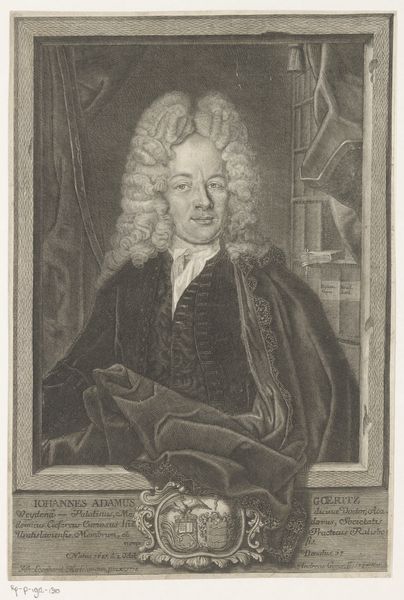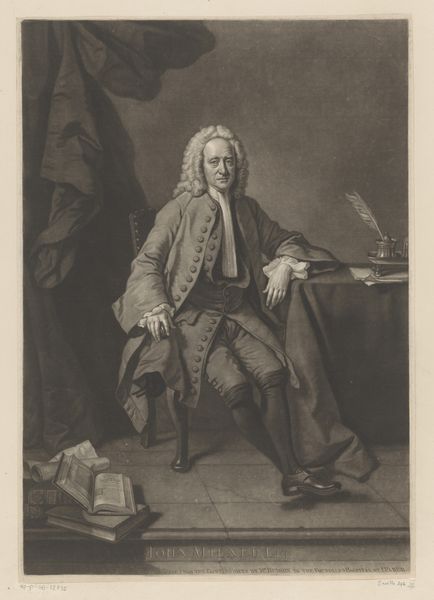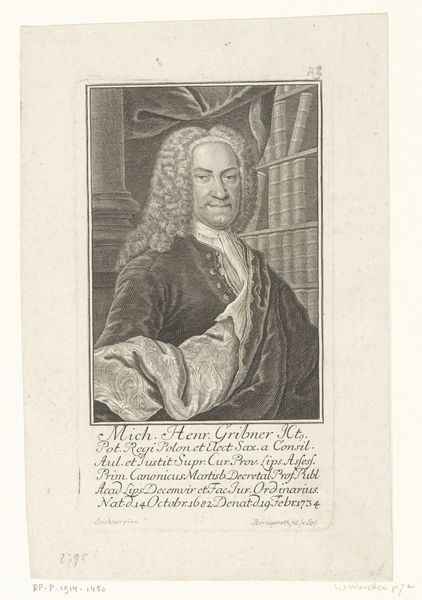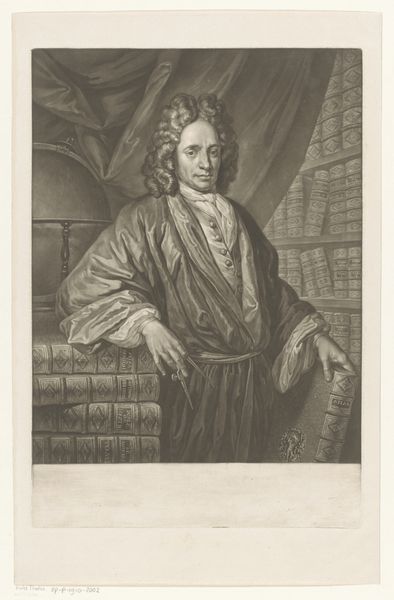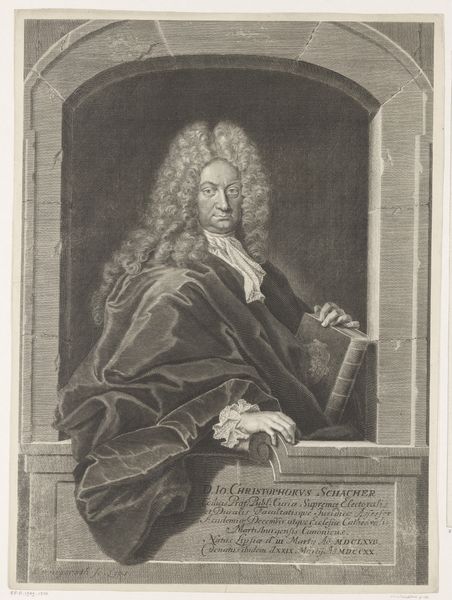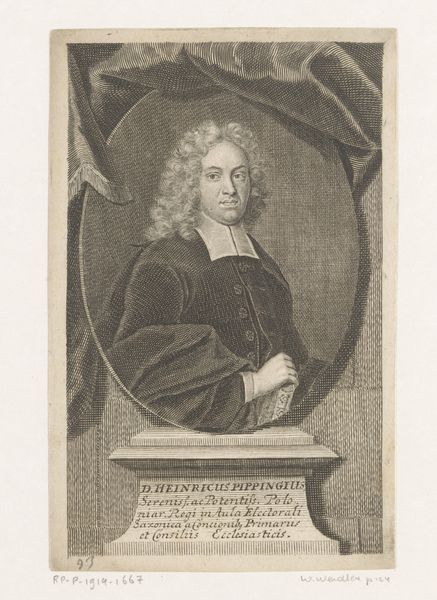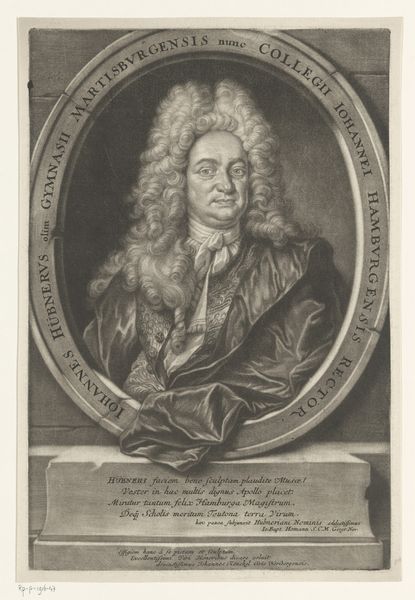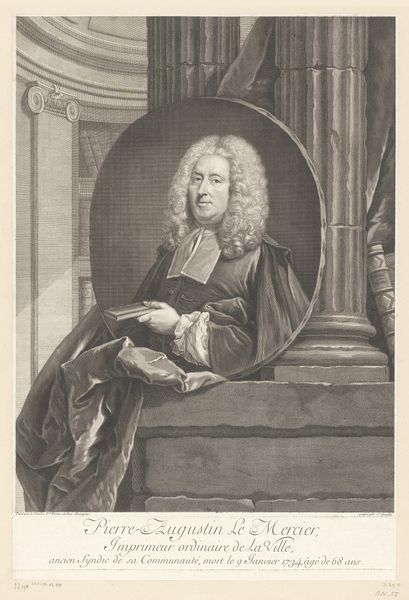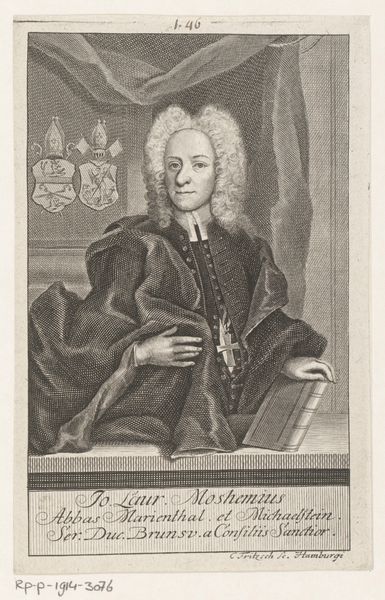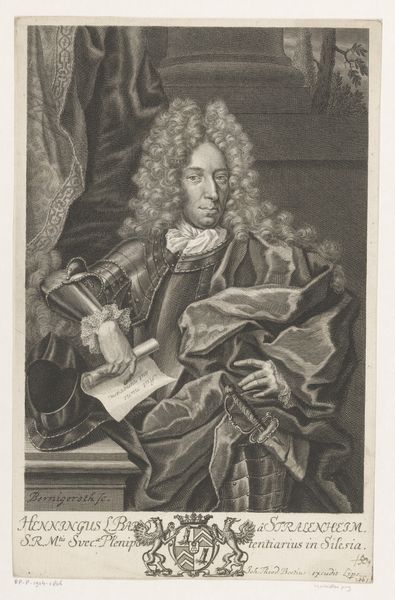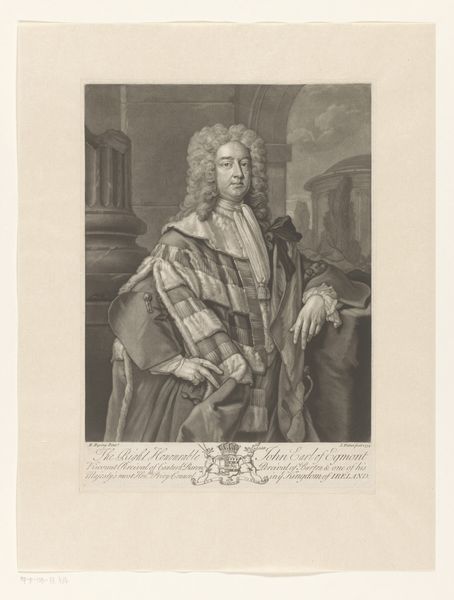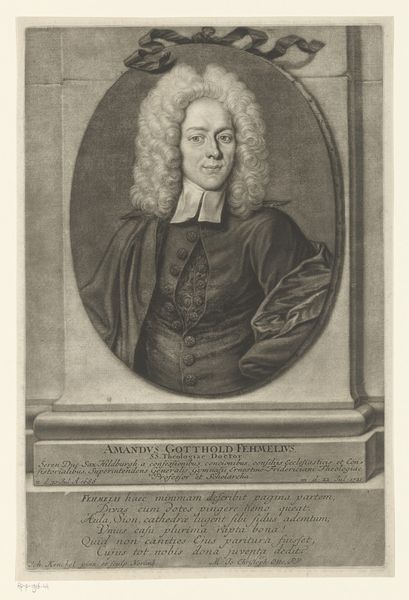
engraving
#
portrait
#
baroque
#
figuration
#
line
#
history-painting
#
engraving
Dimensions: height 350 mm, width 257 mm
Copyright: Rijks Museum: Open Domain
Editor: Here we have "Portrait of Jonathan Swift," an engraving by Pierre Fourdrinier, estimated to have been made sometime between 1725 and 1763. The detail achieved with such fine lines is captivating. What's particularly interesting about it from your perspective? Curator: Let's consider the engraving process itself. Copperplate engraving, the dominant reproductive technique of the 18th century, was hardly neutral. Think about the labor invested in its creation: the engraver’s skill, the printer’s knowledge of paper and ink. These prints were commodities, made for a growing market interested in portraiture and literary figures. To me, the very act of reproducing Swift’s image speaks volumes about his growing cultural importance and the expanding print economy. Do you see this print as celebrating Swift or simply capitalizing on his fame? Editor: I hadn't thought about the economics of it! It's like, Fourdrinier is creating a consumer product just as much as honoring an artist. The poem at the bottom seems to place Swift above any criticism – does that affect your interpretation? Curator: Well, even the celebratory verses at the bottom, produced via the same mechanical means as the image, reinforce the idea that reputations and literary fame were increasingly being manufactured and consumed. Also, consider how the chair is ornamented. Are these signs of aristocracy influencing Swift’s portrait, and does it relate to his social class? Editor: I see what you mean; every element contributes to a larger story about production and consumption. So the value isn't just in the artistic skill but in understanding the economic systems in which this image circulated. Thanks for making me see the print anew! Curator: And thank you. It’s easy to get lost in aesthetics, forgetting that art is always, fundamentally, work.
Comments
No comments
Be the first to comment and join the conversation on the ultimate creative platform.
